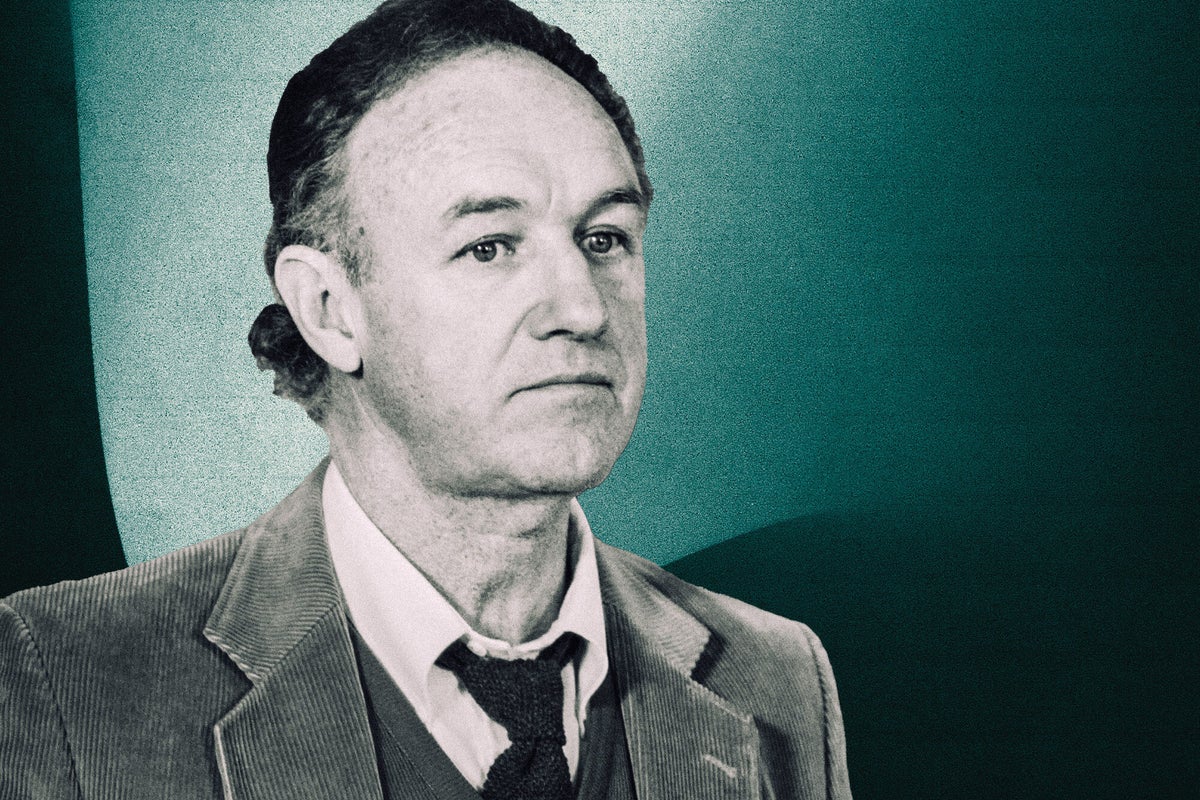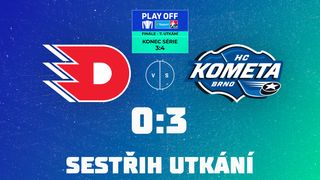

Editor’s Note: This story is a part of Peak, The Athletic’s new desk covering leadership, personal development and success through the lens of sports. Peak aims to connect readers to ideas they can implement in their own personal and professional lives. Follow Peak here.
On the opening day of the NCAA Tournament, a group of participants in the prestigious Duke Leadership Program embarked on a long afternoon lesson: They watched “Hoosiers,” the 1986 sports film starring Gene Hackman.
Advertisement
The class included executives from the business world and senior leaders from the military, law enforcement and medical fields. For the basketball fans in the group, they were treated to a familiar scene. Near the end of the film, Hackman, who plays high school basketball coach Norman Dale, leads his small-school Hickory team into Hinkle Fieldhouse, the site of the Indiana state championship game.
To the boys from Hickory, the hulking gymnasium in Indianapolis is daunting. So Dale pulls out a tape measure and has his players measure the height of the rim and the dimensions of the court.
“I think you’ll find it’s the exact same measurements as our gym back in Hickory,” Dale tells them.
For fans of the classic film, it’s an endearing scene before the big game. For Joseph LeBoeuf, a professor emeritus at Duke’s Fuqua School of Business, it’s a prime example of contextual leadership, one of the six domains of leadership taught during the week-long program.
“Around here, it’s Basketball City,” LeBoeuf said in a phone interview from Durham, N.C. “Everybody loves basketball. So Norman Dale provides a great opportunity to talk about effective and sometimes ineffective leadership.”
When Hackman died at the age of 95 in late February, weeks before the start of March Madness, it offered a moment to consider the legacy of Hoosiers. Conceived by two Indiana natives — screenwriter Angelo Pizzo and director David Anspaugh — the film remains a gold standard for basketball movies. Based in part on the true story of tiny Milan High School, which won the single-class Indiana state championship in 1954, it tells the tale of an outsider coach and an underdog school.
Yet in the four decades since its release, it’s also become a favorite amongst another cohort: Management professors and leadership experts.
Advertisement
LeBoeuf, a retired Army colonel, has used the film in business classes and leadership programs for years. Sam J. Zigrossi, an adjunct professor at Texas State, utilizes the film for a final project assignment in his Effective Leaders course. And it’s also a favorite of Spencer Harrison, a professor of organizational behavior at INSEAD in France.
The simplest reason: Over the course of two hours, the viewer gets to watch a coach change the culture of a team and town.
“Culture is a shortcut for reality,” Harrison said. “Organizational values — the building blocks of culture — simplify interactions, providing guidelines for how colleagues should treat each other. By helping the players see that his boundaries won’t change, the coach is simplifying their reality: ‘This is what it means to work together on this team.’”
In some ways, it should not be a shock that management professors would be attracted to the character of Dale, a straight-talking disciplinarian who arrives in town and preaches fundamentals and team basketball. But it’s the simplicity of the text, LeBoeuf says, that makes it an ideal teaching tool.
Before arriving in Hickory, Hackman’s Dale was once an accomplished college coach in New York. But an ugly incident with a player cost him his career and forced him to join the Navy.
Like most Indiana towns, Hickory is feverish for basketball. But the high school team is undermanned. The roster features seven guys. The players lack fundamentals and defense. And star player Jimmy Chitwood has stopped playing after the previous coach died.
What happens next, by the standards of Hollywood, is fairly predictable: Dale instills his own culture, methods and standards, causing the townspeople to revolt. But after winning over Chitwood — and investing in Shooter, the town drunk-turned-assistant coach — the team starts to win and Hickory starts believing. And as the situation changes, so, too, does Dale’s leadership style.
Advertisement
“You can see that metamorphosis over time,” LeBoeuf said. “It’s really a story of redemption in many ways — of leaders getting a chance to learn from their past experiences and apply them in a different way in order to be successful.”
At the Duke Leadership Program, Dale is used as a case study to teach the Six Domains of Leadership, a concept developed by professors E. Allan Lind and Sim B. Sitkin in 2006. The framework distills leadership into six areas — personal leadership, relationship leadership, contextual leadership, inspirational leadership, supportive leadership and responsible or ethical leadership — which build on each other and form a pyramid.
The Six Domains framework works from the academic theory that leadership (influencing or motivating members of a team) is different than management (using a reward-punishment system to achieve outcomes). In Hoosiers, LeBoeuf says, Dale’s personality, relationship building and communication form the base of the Six Domains pyramid. The next level includes inspirational leadership and supportive leadership, while the top is reserved for ethical leadership, or the ability to balance areas of tension, such as short-term vs. long-term goals or the competing interests of team members.
At various points throughout the movie, LeBoeuf said, Dale exhibits each one.
“We ask: How did Norman Dale inspire his players to play better? How did he build relationships? How did he build trust?”
In the beginning of the film, LeBoeuf said, Dale can be more manager than leader. But his methods create a culture, which then allows him to empower his players at the end of the film.
The character of Dale, however, remains rich enough that it can be applied to multiple leadership frameworks. In 2016, Bryan Mead, a PhD student at Northern Illinois, co-authored a paper with his brother Jason titled, “I Love You Guys: Hoosiers as a model for transformational coaching.”
Advertisement
The paper theorized that the character of Dale embodied “The Five Practices of Exemplary Leadership” created by James Kouzes and Barry Posner in their book, “The Leadership Challenge.”
The framework promoted five simple practices used by leaders and coaches:
1. Model the Way
2. Inspire a Shared Vision
3. Challenge the Process
4. Enable Others to Act
5. Encourage the Heart
One of the most interesting aspects of writing the paper, Mead said, was how easily the framework applied to the movie, right down to the speech Dale gives before the state semifinal game.
“Sports movies tend to do this thing where it makes the coach and the process seem a little easier and more magical than sometimes it often happens in real life,” Mead said. “But what it does show is that these movies are on the right track. And these are time-tested ways in which leaders lead people.
“I think it’s a great sports movie… but it’s a movie that transcends that because this character knows how to lead people and get them going in the right direction. And when you lead people well, you become a team.”
By the end, the Hickory players have come to trust Dale and the team culture is fully established. But there’s a final scene that LeBoeuf and Zigrossi love to show in their classes. In the final moments of the big game, Dale tells his team that Chitwood will be a decoy on the final play. When the players look tentative, Dale can tell something is wrong.
Chitwood speaks up: “I’ll make it.”
Dale changes the play.
“You can see how the team coalesces, and then Norman Dale actually learns as a coach,” LeBoeuf said. “At the end of the state championship game, he makes a decision about what the players should do. The players didn’t agree. They made another recommendation, and he let them do it their way.”
After imposing his own strict rules, he empowers them to act.
Advertisement
For Zigrossi, a former high school basketball coach, the lesson lands every time.
“The course evaluations from students,” he said, “have always been pretty good.”
Rustin Dodd is a senior writer for Peak, The Athletic’s new desk covering leadership, personal development and success. He last wrote about Dan Campbell’s locker room speeches. Follow Peak here.
(Illustration: Eamonn Dalton / The Athletic; PHILIPPE WOJAZER / AFP via Getty Images)
This news was originally published on this post .










Be the first to leave a comment